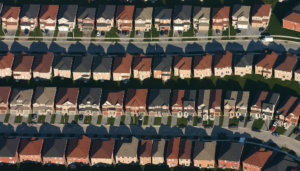We live in unequal times. The causes and consequences of widening disparities in income and wealth are a defining debate of our age. Recent research by Thomas Piketty and his co-authors has made major inroads into documenting trends in either income or wealth inequality. But we still know little about how the two evolve together, and why wealth inequality is so much higher than income inequality.
In a paper with my co-authors, “Income and Wealth Inequality in America” (Kuhn, Schularick and Steins 2018), we exploit a unique new dataset that allows us to track the joint distributions of income and wealth in the U.S. since 1949. The dataset builds on historical waves of the Survey of Consumer Finances (SCF), conducted by the Survey Research Center at the University of Michigan from 1948 to 1977. We linked the historical survey data to the modern SCFs that the Federal Reserve redesigned in 1983.
What do we find? Most importantly, we show that rich and poor households have very different assets. Middle-class households prominently own houses, while the top-10% predominantly own shares and business equity. This gives rise to a race between the housing market and the stock market in shaping the wealth distribution. Housing booms lead to wealth gains for leveraged middle-class households and tend to decrease wealth inequality. Stock market booms primarily boost the wealth at the top of the wealth distribution. Asset price changes can therefore lead to major changes in the wealth distribution. Over extended periods in postwar American history, such portfolio valuation effects have been key drivers of shifts in the U.S. distribution of wealth.
Moreover, asset price changes can decouple trends in income and wealth inequality for long time periods. This was predominantly the case in the four decades before the financial crisis when the middle class rapidly lost ground to the top 10% with respect to income but, by and large, maintained its wealth position thanks to substantial gains in housing wealth. Incomes of the top 10% more than doubled since 1971, while the incomes of middle-class households (50th to 90th percentile) increased by less than 40%, and those of households in the bottom 50% stagnated in real terms. Our data confirm a strong trend toward growing income concentration at the top.
However, when it comes to wealth, the picture is different, at least until the financial crisis. For the bottom 50%, wealth doubled between 1971 and 2007 despite zero income growth. For the middle class (50%-90%) and for the top 10%, wealth grew at approximately the same rate, rising by a factor of 2.5. As a result, wealth-to-income ratios increased most strongly for the bottom 90% of the wealth distribution.
Price effects accounted for the dominant part of the wealth gains of the middle and the lower middle class before the global financial crisis. For the bottom 50% virtually all wealth growth over the 1971-2007 period came from higher asset prices. From a political economy perspective, it is conceivable that these large wealth gains for the middle and lower middle class helped to dispel discontent about stagnant incomes for some time.
When house prices collapsed in the 2008 crisis, the same leveraged portfolio position of the middle class brought about substantial wealth losses, while the quick rebound in stock markets boosted wealth at the top. The bottom 50% lost 15% of wealth relative to 2007 levels, mainly because of lower house prices. By contrast, the top 10% were the main beneficiaries from the stock market boom and were relatively less affected by the drop in residential real estate prices. Substantial wealth losses at the bottom and in the middle of the distribution, coupled with wealth gains at the top, produced the largest spike in wealth inequality in postwar American history between 2007 and 2016.
We also study another central dimension of inequality, namely the racial income and wealth gap between black and white households. We show that income disparities between black and white households are as large today as they were in the pre-civil rights era. In 1950, the income of the median white household was about twice as high as the income of the median black household. In 2016, the median white household still has double the income of a black household. The racial wealth gap is even wider, and is as large as it was in the 1950s and 1960s. The median black household persistently has less than 15% of the wealth of the median white household, and the typical black household remains poorer than 80% of white households. Over the past seven decades, next to no progress has been made in narrowing black-white income and wealth differences. Designing policies to address these persistent racial inequalities more successfully than in the past thus remains an urgent policy priority.








